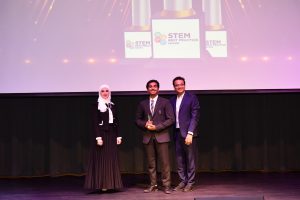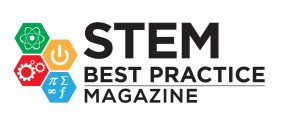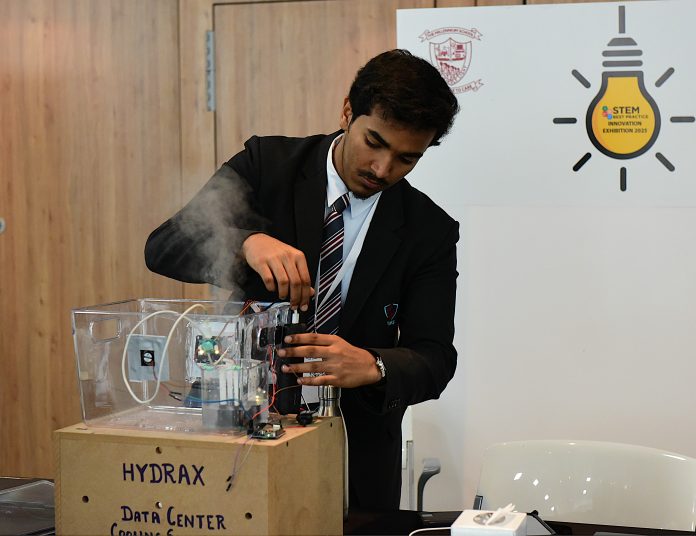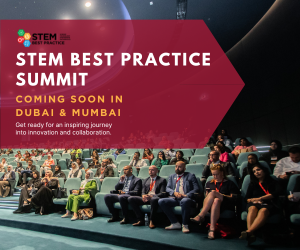Project Title: HYDRAX – A Sustainable Data Center Cooling System
Student Name: Thomas Sebastian
School: The Millennium School, Dubai – Grade 11
Abstract
HYDRAX is an AI-powered humidity harvesting and cooling system designed to address the extreme water consumption of traditional data center cooling mechanisms. By leveraging atmospheric humidity and machine learning, HYDRAX reduces water usage by up to 95.7%, consuming just 3,000 liters of water per day versus the 100,000 gallons (≈378,000 liters) used every 6 days by a typical 1 MW data center. It utilizes a closed-loop misting and condensation system optimized through AI, enabling a significant reduction in both water and energy consumption. With 23% energy savings and 460 tonnes less CO₂ emitted annually, HYDRAX is a leap forward in green infrastructure. The innovation has already earned regional recognition at the STEM Best Practices Summit in Dubai, where it was awarded the “Future Catalyst” Award. This article presents the journey behind HYDRAX—from problem identification to prototyping and potential global impact. The project is currently under patent processing in Germany.
Introduction
The rise of artificial intelligence, cloud computing, and IoT has exponentially increased the demand for data centers. However, this digital transformation comes at an ecological cost. Globally, data centers consume 1.3–2% of all electricity—around 460 terawatt-hours per year. Of this, 35–40% is consumed just for cooling. Moreover, a single 1 MW data center typically uses about 100,000 gallons of water every six days, primarily for evaporative cooling. Microsoft alone used over 12 billion liters in 2023, and its Quincy data center consumes around 380 million gallons annually.
These staggering numbers contribute to around 0.5% of global CO₂ emissions from data centers alone—expected to double by 2030. This burden on electricity grids and freshwater resources is unsustainable, particularly in arid regions like the Middle East.
This led me to initiate the HYDRAX project, aiming to develop a scalable, environmentally friendly alternative for cooling high-performance computing infrastructure.
Research & Background
Defining the Problem
Data centers are critical to digital infrastructure but require immense energy and water resources. In the UAE and other parts of the world, where water scarcity is a pressing concern, the conventional model of evaporative cooling using fresh water is environmentally and economically untenable.
Research Insights
My research spanned:
– Environmental engineering studies on dew point condensation and phase change cooling.
– AI-driven adaptive control systems in HVAC applications.
– Atmospheric water harvesting (AWH) technologies in desert regions.
I also studied case reports from Microsoft, Google, and Equinix—global leaders in data center design—and their reliance on water-cooled systems. Most innovations were focused on increasing server efficiency, with limited progress on reducing water dependency.
The Hypothesis
If I could design a system which requires minimal water usage in addition to a water re-use provision, I could greatly reduce water usage in data centers. Misting is a process ideally suited for this since it is a low water usage process in the first place and adding water recovery systems in the form of condensation by Peltier modules would further enhance water conservation.
Methodology
Concept Design
HYDRAX comprises three key components:
1. Closed-loop Misting System – Generates cooling mist using misting modules in a closed chamber
2. Peltier module condensing system – Condenses water in the same closed chamber for re-use, approximately 90 percent of the misted water is recollected this way and isn’t lost.
3. AI Thermal Controller – Uses machine learning to optimize cooling performance in real time by predicting thermal load and environmental variables.
Tools and Materials
– DHT22 environmental sensors for humidity and temperature data.
– Thermoelectric Peltier modules with customized aluminum heat sinks.
– Misting modules to create mist for cooling the hot server air.
– Microcontrollers (Arduino Uno and Raspberry Pi) for live monitoring.
– Closed misting chamber, inlet and outlet fan with drying agent to prevent moisture from exiting the device and causing damage to server.
AI Model Training
The AI controller will be trained on data from real-world hourly humidity and temperature logs in Dubai. It predicts the optimal misting volume and triggers the condensation modules based on changing weather and heat load. The model also adjusts mist density to balance evaporation and recapture efficiency.
Project Results
Deliverables
– Recycles the same 100,000-gallon equivalent tank for 126 days—a 95.7% reduction in water use compared to traditional systems which only do so for 6 days.
– Reduces overall energy usage by approx. 23 percent.
– Eliminates approx. half a kiloton of carbon dioxide emissions per year from a medium scale (1MW) data center.
Visuals and Data
Technical Data Highlights:
– Daily mist volume: 30,000 liters
– Water recovered via Peltier condensation: 27,000 liters (90%)
– Net daily loss: 3,000 liters
– Energy savings: 3,504 MWh/year → reduced to 2,730 MWh/year (23% saving)
– CO₂ reduction: 460 tonnes/year (based on 0.4 kg CO₂/kWh)
– Heat removed daily in 1 MW data center: 24,000 kWh
– Mist removes 18,900 kWh
– Peltier handles remaining 5,100 kWh
– Effective Coefficient of Performance (COP):
– Raw Peltier: ~0.5
– Estimated with AI optimization: ~0.7



Analysis
The AI optimization not only improved condensation efficiency but also allowed the system to avoid unnecessary misting during high humidity hours—cutting water loss. Traditional systems, in comparison, do not adjust to real-time weather, leading to wasteful cooling cycles. By combining machine learning with environmental engineering, HYDRAX provides a responsive, low-impact solution.
Conclusion
HYDRAX isn’t just a prototype—it’s a scalable model for sustainable infrastructure in the age of AI and climate urgency. With a 95.7% reduction in water consumption, 23% energy savings, and nearly half a kiloton of CO₂ avoided per year per data center, it holds immense promise for hyperscale and edge data centers in hot, arid regions.
Impact
– Environmental: Mitigates water stress in data-intensive regions.
– Economic: Reduces utility costs and regulatory risks.
– Strategic: Supports sustainability targets for cloud and AI service providers.
Further Development
– Testing with higher-capacity heat loads and industrial-grade condensers.
– Field testing in Middle East data centers through corporate partnerships.
– Integrating solar energy sources for off-grid setups in rural and desert locations.
About the Author
 Thomas Sebastian is a student innovator and STEM advocate from The Millennium School, Dubai. He holds four patents, excluding HYDRAX, which is currently under patent processing in Germany. He was awarded the “Future Catalyst” Award at the STEM Best Practices Summit. A participant of the 2025 Harvard Undergraduate Venture Tech Program, Thomas has presented at GITEX 2023 and 2024, Dubai Police Innovation Expo, and mentored hundreds of students across India and the UAE in STEM.
Thomas Sebastian is a student innovator and STEM advocate from The Millennium School, Dubai. He holds four patents, excluding HYDRAX, which is currently under patent processing in Germany. He was awarded the “Future Catalyst” Award at the STEM Best Practices Summit. A participant of the 2025 Harvard Undergraduate Venture Tech Program, Thomas has presented at GITEX 2023 and 2024, Dubai Police Innovation Expo, and mentored hundreds of students across India and the UAE in STEM.




